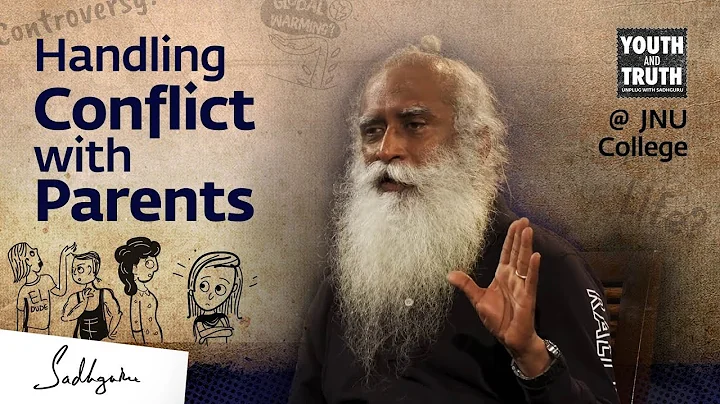If it were us, they might say to our children, "It doesn't matter, this is sea water, don't be afraid." Then they start swimming to show them to the children.
But the 4-year-old father didn't do that. Instead, he walked to the child, smiled, helped his son up, and said, "You swam so well, I can't float on the water until now." Unexpectedly, just such a seemingly meaningless sentence made the child excited. After that, the child overcame his fear of water and quickly learned to swim.
As children grow up, they always encounter many things that scare them. We often comfort their children for granted: It’s okay, it’s nothing. But this comfort actually does not work, but it does not work. What should we do to help our children overcome their fear?
The book "Children's Fear Psychology: Understanding Children's Fear Emotions from Graffiti" co-authored by psychologist Evi and psychotherapist Alberto tells us the answer.

This book is our guide to understanding children's fear psychology. It introduces us to the fear emotions presented in children's graffiti, and tells us how different types of fear emotions should be solved. The book proposes a point of view to helping children overcome fear: embrace is more useful than comfort.
In fact, when solving children's fear, we first understand fear.
Is fear a manifestation of cowardice?
When we see our children feel scared, we often don’t take it in our hearts. Instead, we feel that the children are fussy and even feel that the children are too cowardly and not strong enough.

In fact, when we think from the perspective of others, as adults, we also feel scared. It can be said that fear is accompanied by our lives, and the existence of appropriate fear is actually beneficial to each of us.
For example, when we come to a dark place where there is no one, and the silence makes us feel terrible, our fear arises naturally. At this moment, because of this emotion, we dare not approach and fear any danger ahead. In order to protect ourselves, we will be vigilant every step we take.
This is the effect of fear, which makes us approach and feel vigilant to protect ourselves.
This is the effect of fear on us. For us, fear is a need for survival, helps us protect our self-warfare and helps the development of our adaptability.
Therefore, fear is not a manifestation of cowardice. On the contrary, this is an instinct after everyone is born. Only by driving fear emotions can we grow slowly. As the author said: "The meaning of fear is overcome. It is precisely because of overcoming fear that children can grow up and gain independence."
So, as parents and experienced people, how should we help children overcome fear and let children grow from fear?
Overcoming fear cannot just comfort
Many times, in the face of children's fear, we all look down from the perspective of adults, so there are words like "Children, it's okay, this is nothing, you should do this..." But for children, children cannot understand these words from adults. For them, these words are useless and cannot help them overcome fear.

As parents, we can do it: for example, children are afraid of thunder, so we can tell them, children, let’s listen, what does this thunder look like, does it look like a dark cloud playing a collision game? When children hear such descriptions, they will find it interesting and gradually eliminate their fear of thunder.
So, the author said: "When facing children's fear, we do not need to reason or conceptualize." "Children do not need very logical truths, nor do they succumb to strength or coercion, but we need to affirm and strengthen their personality."
Speaking of personality, there are also different differences in children's fear emotions. This difference comes from age and different types of fear emotions. When we understand the types of children's fears well, we can prescribe the right medicine and help children overcome fear.
Interpret fear emotions from graffiti
Children of each age are different. In this book, the author lists the fear emotions of children of each age from 0 to 12 years old. Commonality. But this is not enough. To solve the child's fear, we need more specific analysis, such as the specific type of fear.
There are many ways to know the specific type of child's fear, but the most intuitive thing is to judge it through the child's painting.

For example, some children are insecure since childhood and are afraid of being abandoned, then they will show taciturn, self-enclosure, or unreasonable aggressiveness. In their paintings, I We often find that the trees they draw are always curved, the people they draw may not have painted colors, etc. When we observe in our daily life that children are afraid of being abandoned, then we can take measures accordingly: for example, use a positive tone to make them feel at ease, spend more time with them in daily life, and let them feel the intimacy of their parents.
summary
Facing children's fear, strict education will only make children feel more guilty, and simple "you should do" or " You can't do it" is also difficult to make them independent. Maybe, when they were young, under the command of their parents, they performed well, but when they got older, such an educational method would make him lose his life goals and unable to make himself stronger.
So, we need to better understand fear in order to better help children overcome fear and allow them to grow better. Sometimes, "non-verbal symbols with a sense of participation are more useful than comforting words, such as a hug or a caress than many useless words. ”
#Toutiao Jieyou Pavilion##2022 Parenting Season#











